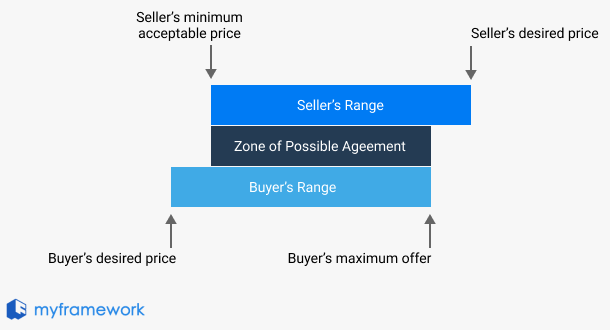Framework Card
ZOPA Zone Of Possible Agreement
A negotiation concept that defines the range where both parties can accept a deal.
Negotiation
Bargaining Zone
What is the ZOPA?
There are always gaps between buyers and sellers, that's why we need negotiations.
The Zone of Possible Agreement (ZOPA) is a key concept in negotiation and conflict management. It represents the overlapping area of acceptable conditions where both negotiating parties can find a common area.
You may not be familiar with the term ZOPA, but you’ve likely heard of similar phrases like “bargaining range” or “negotiation zone.” These terms describe the same idea.
Visualizing the ZOPA Framework





